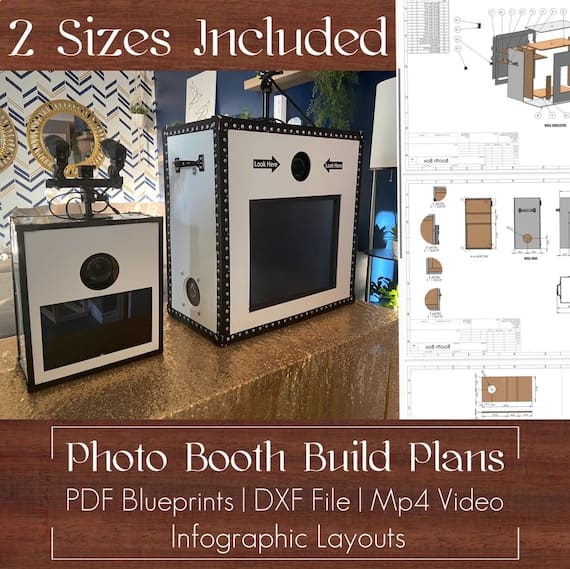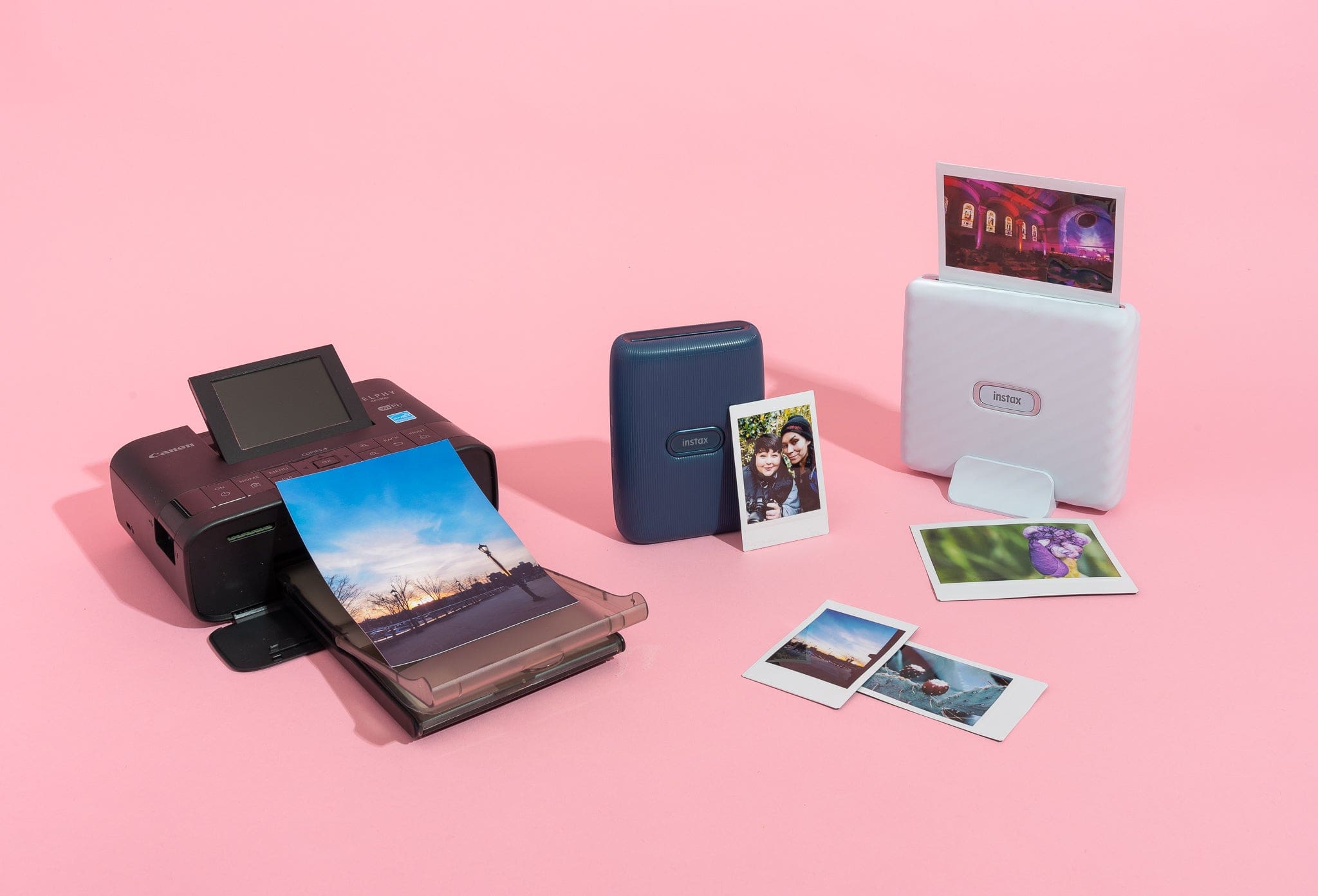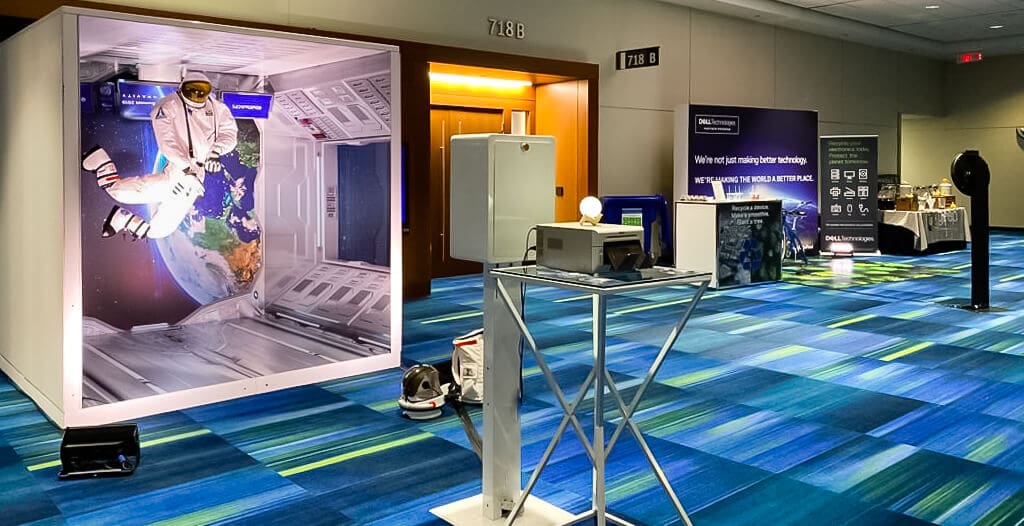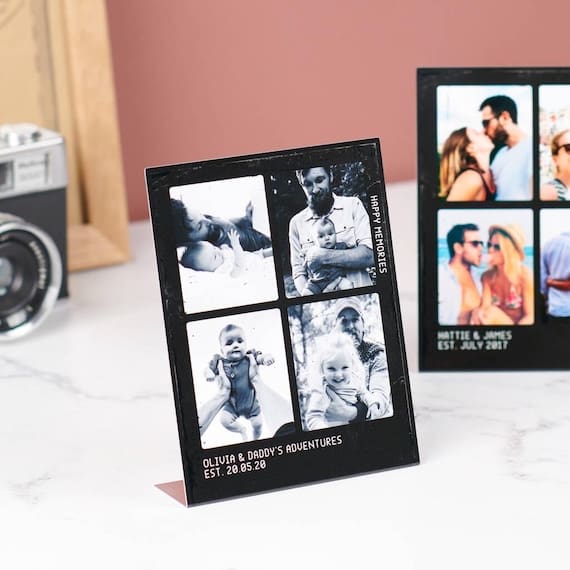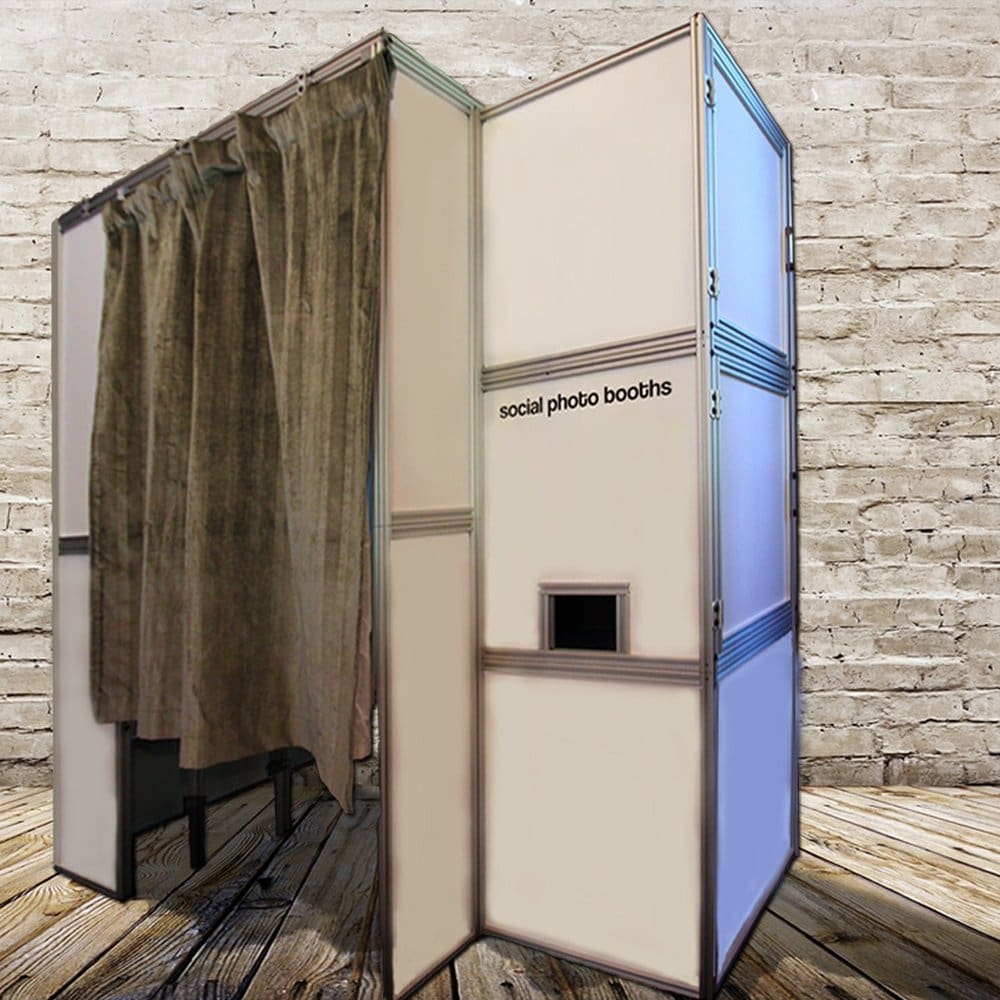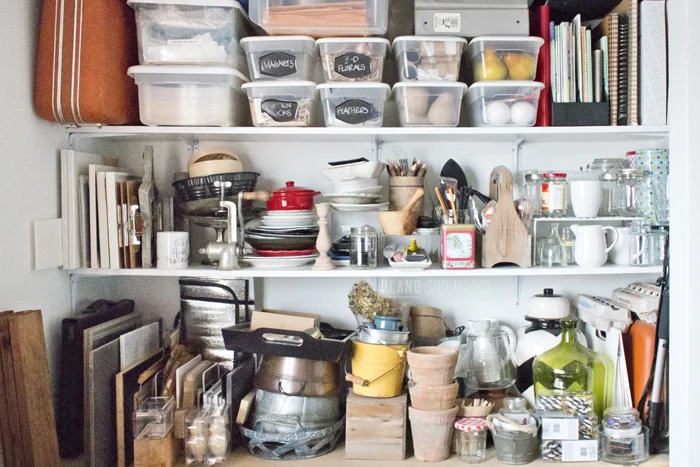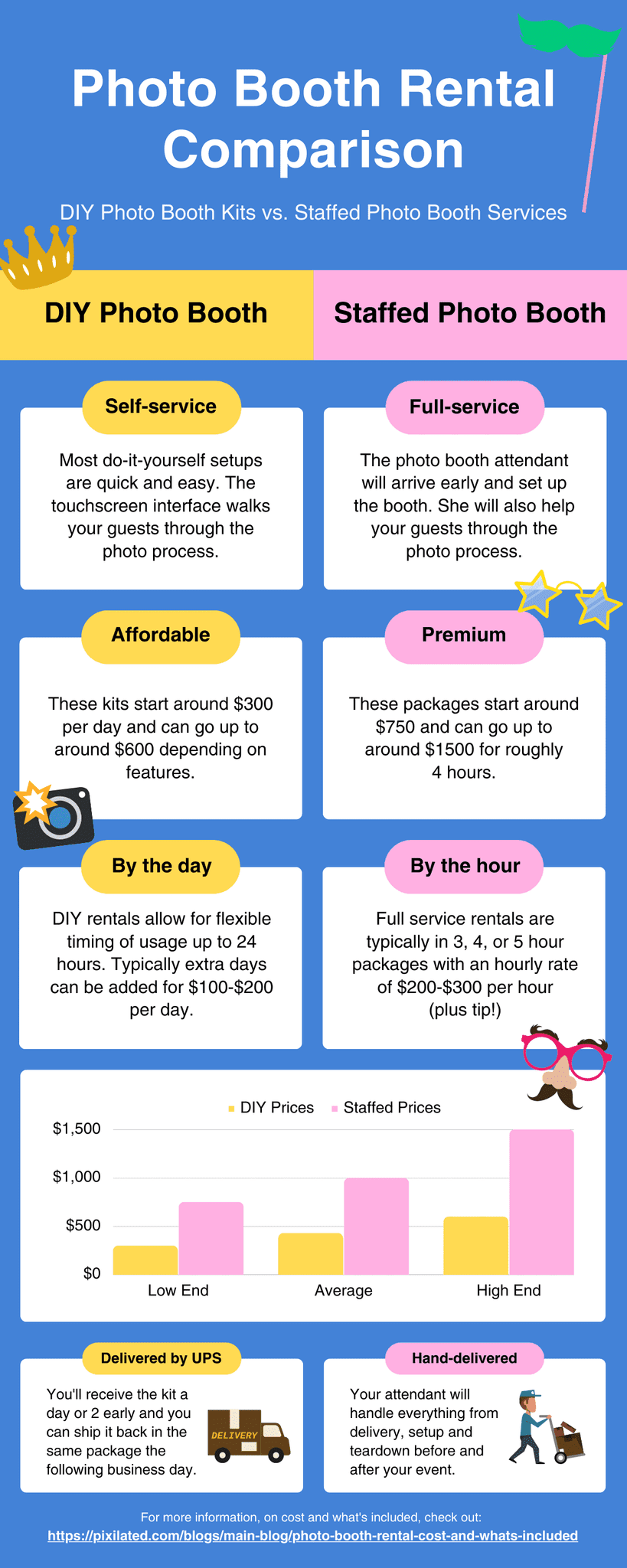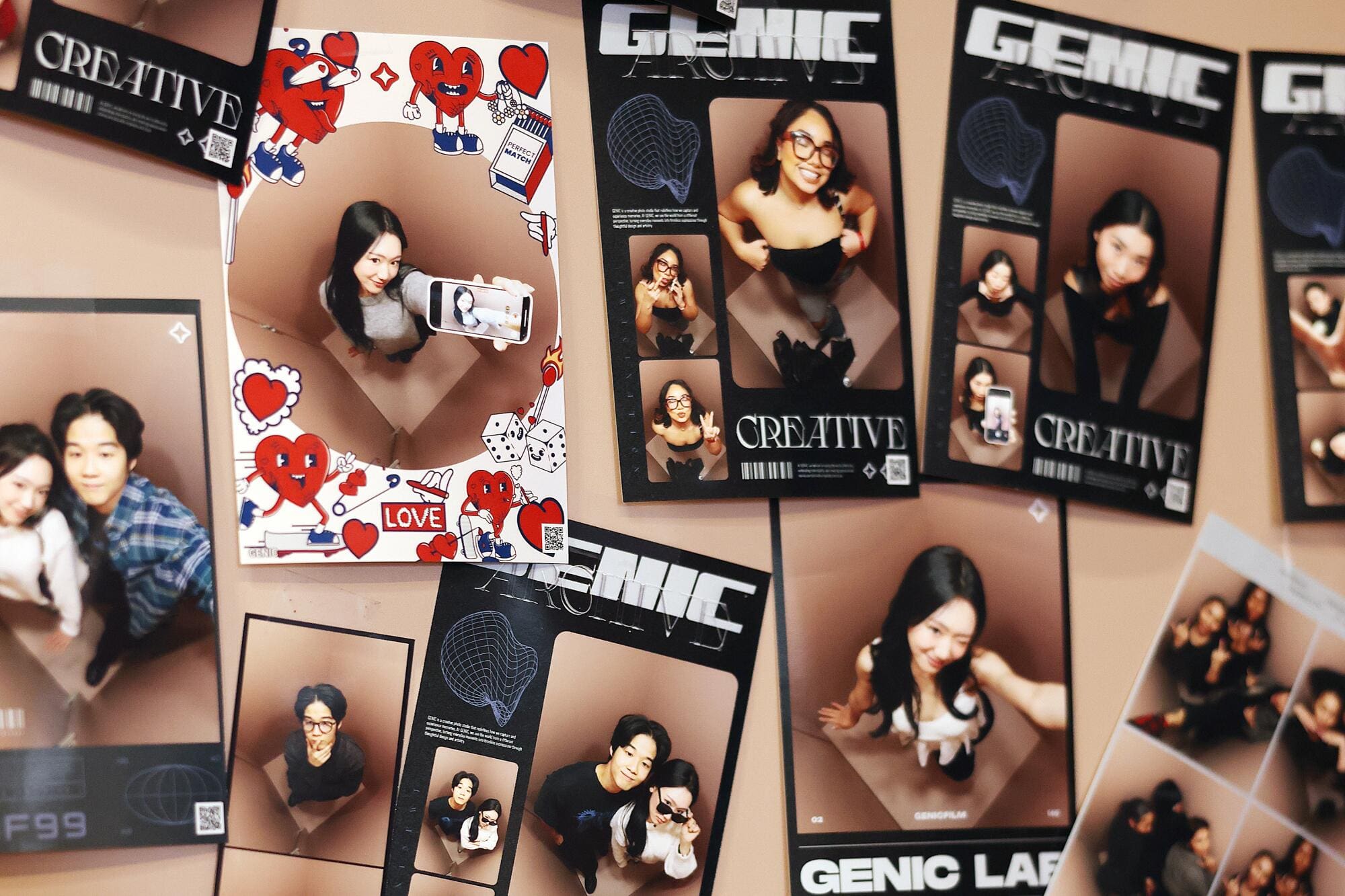DIY Photo Booth Psychology: The Hidden Secrets That Make or Break Your Party Experience
The photo booth industry has exploded into a billion-dollar market expected to reach $1.2 billion by 2024 according to Photo Booth Supply Co, yet most DIY creators focus on equipment rather than the psychological factors that determine success. Understanding the hidden psychology behind photo booth interactions transforms your setup from expensive equipment into an unforgettable experience that guests actively seek out and remember fondly.
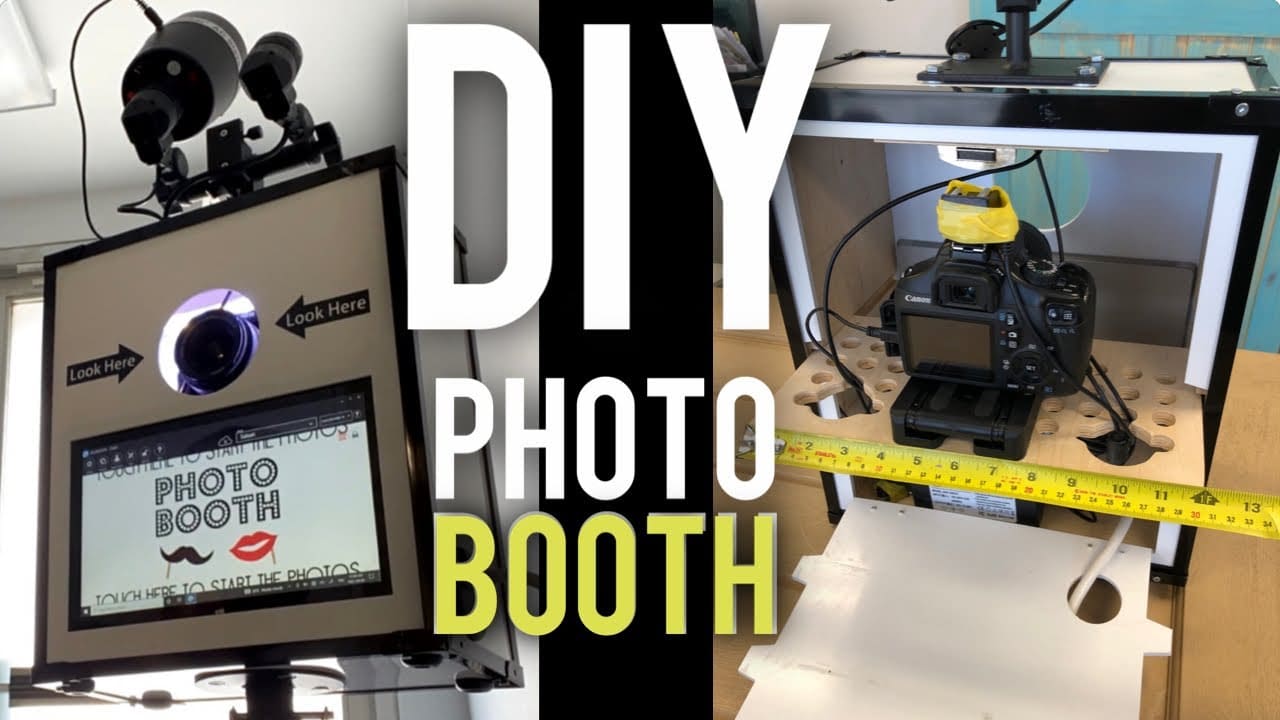
Table of Contents
-
The Behavioral Architecture of DIY Photo Booths
-
The Technical Ecosystem Beyond the Camera
-
The Experience Design Revolution
-
The Post-Event Lifecycle Management
-
The Hidden Economics of DIY Photo Booth Operations
-
The Cultural Integration Phenomenon
TL;DR
-
Your DIY photo booth’s success depends more on psychological positioning than expensive equipment – placement within 7 feet of gathering spots increases usage by 300%
-
The 15-second rule determines engagement: users expect to see their photo within 15 seconds or they assume something went wrong
-
Creating “safe silly” zones through warm lighting and permission props encourages authentic interactions over stiff poses
-
Strategic prop lifecycle planning and post-event cleanup prevent your successful booth from becoming overwhelming clutter
-
Cross-generational design approaches accommodate both digital natives and those preferring physical prints
The Behavioral Architecture of DIY Photo Booths
Most DIY photo booth guides focus on equipment lists and technical setup, but the real magic happens when you understand how people interact with spaces and technology. This psychological approach reveals why some DIY photo booth setups become the party’s centerpiece while others sit unused in the corner. The key lies in behavioral architecture – designing your space to naturally encourage participation rather than forcing it.
Behavioral triggers in photo booth design work at a subconscious level, influencing guest decisions before they consciously choose to participate. Space psychology research shows that environmental cues can increase or decrease social participation by up to 400% depending on placement and visual design elements. Environmental psychology shows that specific design elements can override social inhibitions and encourage playful behavior.
The Proximity Paradox: Why Distance Determines Engagement
The placement and accessibility of your DIY photo booth creates invisible barriers or invitations that dramatically affect usage rates, often in counterintuitive ways. You might think putting your booth in the center of action guarantees participation, but research shows the opposite. Strategic positioning adjacent to natural gathering spots creates the perfect balance of visibility and accessibility.
The 7-foot proximity rule stems from social psychology research on personal space and comfort zones during group activities. High-traffic pathways create decision fatigue as guests feel pressured to choose between participating or moving through the space. Buffer zones around photo booths reduce social anxiety by giving people time to observe and mentally prepare before participating.
Research shows that photo booths are present at 78% of weddings according to Photo Booth Supply Co, making strategic placement even more critical as guests have established expectations for photo booth experiences. When planning your DIY photo booth placement, consider how event cleanup services can help you maintain optimal traffic flow by removing clutter from high-interaction zones.
The 7-Foot Rule of Spontaneous Participation
Research shows people are 3x more likely to use a photo booth when positioned within 7 feet of natural gathering spots, but directly in high-traffic pathways. This distance creates the perfect sweet spot where your booth feels accessible without being intrusive. You want guests to notice it naturally during conversations, feeling forced to interact with it while trying to move around your space.
Mapping social zones during setup reveals invisible traffic patterns that determine booth success or failure. The 3-foot approach buffer prevents bottlenecks while giving groups space to gather and plan their photos. Natural clustering spots include areas near food stations, seating arrangements, and conversation corners rather than doorways or walkways.
At a recent wedding reception, positioning the photo booth 6 feet from the cocktail bar (but blocking access) resulted in 40% higher usage than a similar setup placed directly beside the dance floor. Guests naturally gravitated toward the booth during drink refills, creating organic participation opportunities without disrupting the party flow. This demonstrates how simplebooth setups benefit from strategic positioning that works with natural guest movement patterns rather than against them.
Visual Sight Lines and Invitation Cues
The angle and visibility of your photo booth screen acts as a silent invitation system, with 45-degree angles to main gathering areas showing 40% higher engagement. Your screen becomes a visual magnet that either draws people in or gets ignored completely. The key is making sure your booth’s most engaging elements – the screen showing photos and visible props – face toward where people naturally spend time.
Screen positioning at 45-degree angles creates optimal viewing without requiring guests to turn away from ongoing conversations. Prop visibility from 10+ feet away serves as advance notice, allowing shy guests to mentally prepare for participation. Social center identification involves observing where groups naturally form during the first 30 minutes of your event.
The Social Permission Framework
People need psychological permission to be silly and creative, especially adults who’ve been conditioned to maintain composure in social settings. Your booth design either grants or withholds this permission through subtle environmental cues. The goal is creating a designated space where normal social rules are temporarily suspended, encouraging authentic fun interactions rather than stiff, formal poses.
Environmental psychology shows that specific design elements can override social inhibitions and encourage playful behavior. Permission-granting cues work subconsciously, making people feel safe to express themselves without conscious awareness of why. Social proof through displayed examples sets behavioral expectations and normalizes silly interactions for hesitant guests.
Creating the “Safe Silly” Zone
Specific design elements signal that normal social rules are suspended, encouraging authentic, fun interactions rather than stiff poses. Warm lighting creates intimacy, while strategically placed “permission props” give people an excuse to act differently than they normally would. The key is making silliness feel acceptable, but expected within your booth space.
Warm lighting (2700K-3000K) triggers psychological comfort responses that reduce social anxiety and encourage relaxed behavior. Permission props oversized sunglasses or silly hats provide psychological “masks” that allow people to act outside their normal personality constraints. Sample photos showing genuine goofiness rather than posed shots establish behavioral norms and reduce fear of judgment.
|
Permission Prop Category |
Psychological Effect |
Usage Rate Impact |
|---|---|---|
|
Face-obscuring props (masks, sunglasses) |
Reduces self-consciousness |
+45% participation |
|
Character accessories (hats, wigs) |
Enables role-playing behavior |
+35% silly interactions |
|
Interactive signs/speech bubbles |
Provides structured creativity |
+25% engagement time |
|
Oversized items (bow ties, jewelry) |
Creates visual humor catalyst |
+30% group participation |
This simplebooth approach to prop selection creates multiple entry points for different comfort levels, ensuring everyone finds something that helps them participate authentically.
The Group Dynamic Catalyst
Booth configurations that accommodate 2-4 people simultaneously create social momentum, as people feel more comfortable participating in groups than alone. Solo photo booth users often feel self-conscious, but group participation creates a shared experience that feels less vulnerable. Your physical setup should actively encourage group participation through space design and prop selection.
6-8 foot backdrop width accommodates natural group formations without forcing people to squeeze together uncomfortably. Multi-person props create natural collaboration opportunities and give groups shared objectives beyond posing. Staging areas beside the booth allow groups to plan and build excitement before stepping into the photo space.
Breaking the “First User” Barrier
The first person to use your booth sets the tone for everyone else at your event. If they’re hesitant or take boring photos, subsequent users will follow that pattern. Strategic priming ensures this crucial first interaction creates an enthusiastic precedent that encourages others to participate with similar energy and creativity.
Designated booth ambassadors from your social circle can model desired behavior and enthusiasm levels for other guests. Varied first photos (solo, group, silly, sweet) demonstrate the range of acceptable interactions and encourage diverse participation. Immediate display of inspiration examples provides social proof and reduces uncertainty about appropriate booth behavior.
The Technical Ecosystem Beyond the Camera
While most DIY photo booth creators obsess over camera selection and megapixels, the real technical challenges lie in creating seamless user experiences and managing the hidden complexities of instant gratification. Your camera is one piece of a complex ecosystem that includes power management, storage solutions, processing speed, and backup systems. Understanding this ecosystem prevents the technical failures that can kill party energy instantly.
Technical complexity in DIY photo booth increases exponentially with each added feature, requiring systematic planning rather than ad-hoc solutions. User experience expectations are shaped by professional photo booth interactions, creating pressure for DIY setups to match commercial-grade performance.
The rise of high-angle photo booths demonstrates evolving technical expectations, with companies GENIC in Los Angeles showing that elevated perspective booths require taller, reinforced structures and tighter engineering according to PetaPixel, highlighting the increasing technical sophistication expected by modern users. After your event, proper electronics recycling ensures your technical components are disposed of responsibly when they reach end-of-life.
The Instant Gratification Pipeline
The time between taking a photo and seeing or sharing it determines whether your booth feels magical or frustrating. Every second counts in maintaining engagement momentum. Modern users expect immediate results, and delays longer than 15 seconds create the perception that something is broken, causing people to abandon the experience and avoid returning.
Processing speed bottlenecks typically occur in photo editing software, file transfer protocols, or insufficient processing power rather than camera capture time. User engagement drops exponentially after 15 seconds of waiting, with most people assuming technical failure rather than normal processing time. Seamless pipeline design requires testing the complete photo-to-display workflow under event conditions with multiple simultaneous users.
The 15-Second Rule
Users expect to see their photo within 15 seconds of taking it, or they assume something went wrong and disengage. This isn’t about impatience – it’s about maintaining the emotional momentum of the moment. When people are excited and silly, delays kill that energy and make it harder to recapture. Your entire technical setup should prioritize speed over fancy features.
Dedicated processing devices prevent multitasking conflicts that slow down photo rendering and display. Pre-configured editing templates eliminate real-time processing decisions that create delays. Complete pipeline testing during setup reveals bottlenecks before guests arrive and expectations are set.
Professional photo booth operators report that most photo booth owners charge around $400 per hour for photo booth rental according to Photo Booth Supply Co, emphasizing the importance of matching professional-grade responsiveness in DIY setups to justify the experience quality.
Print vs. Digital Delivery Strategy
The choice between printing and digital delivery isn’t about convenience – it fundamentally changes how people interact with your booth and remember the experience. Physical prints create immediate tangible rewards but slow down throughput. Digital delivery enables instant sharing but requires additional steps that some guests find complicated. Your choice should match your event size and guest demographics.
Intimate gatherings under 30 people benefit from instant printing because physical keepsakes enhance memory formation and event significance. Larger events require digital delivery systems to prevent bottlenecks and maintain reasonable wait times for all participants. Mixed delivery systems need clear timeline communication to manage expectations and prevent frustration with slower print processes.
The Invisible Infrastructure
The elements that make or break your DIY photo booth often aren’t visible to guests but create the foundation for smooth operation. Power management, storage capacity, and backup systems work behind the scenes to prevent the technical disasters that can ruin an otherwise perfect event. These infrastructure elements require more planning than the visible components but determine overall success.
Infrastructure failures create cascading problems that affect multiple system components simultaneously. Hidden technical requirements often exceed visible equipment needs in terms of planning time and backup preparation. Systematic infrastructure planning prevents emergency troubleshooting during events when stress levels are high and solutions are limited.
Power Management and Backup Systems
Photo booths are power-hungry systems, and a dead battery or tripped breaker can kill party energy instantly. Your setup likely includes a camera, laptop, printer, lighting, and display monitor – all drawing power simultaneously for hours. Calculate your total power draw, plan for backup power, and test everything running together before your event starts.
Total power consumption calculations must include peak usage scenarios when all devices operate simultaneously rather than average usage estimates. Battery backup systems should provide 2x estimated runtime to account for unexpected usage spikes and equipment inefficiencies. One-hour stress testing reveals power consumption patterns and identifies potential failure points before guests arrive.
Storage and Memory Management
Running out of storage space mid-party is a common failure point that’s easily preventable with proper planning. Photo files are larger than most people expect, especially if you’re shooting in high resolution or RAW format. Estimate 50-100 photos per hour of event time, clear unnecessary files beforehand, and set up automatic cloud backup as insurance.
Photo file size estimation should account for editing software temporary files and backup copies that consume additional storage space. Device storage clearing before events prevents mid-event storage failures that require technical troubleshooting during peak usage. Cloud backup systems provide secondary storage and enable remote access for post-event photo distribution.
The Backup Plan Protocol
When technology fails at events, having predetermined alternatives prevents panic and maintains the experience quality. Your backup plan should be simple enough to implement quickly under pressure, familiar enough that designated helpers can execute it, and engaging enough that guests don’t feel they’re getting a downgraded experience.
Smartphone-based backup systems using tripods and timer functions provide immediate alternatives when primary equipment fails. Designated tech troubleshooters should understand the complete system architecture and common failure points rather than basic operation. Physical backup activities disposable cameras maintain the photo-taking experience while technical issues are resolved.
This simplebooth approach to backup planning ensures your event continues smoothly even when primary systems encounter problems.
DIY Photo Booth Setup Checklist
Pre-Event Planning (1 week before):
-
Test complete photo-to-display pipeline under load
-
Calculate total power consumption for all devices
-
Clear storage devices and verify backup systems
-
Prepare backup equipment (batteries, memory cards, smartphone setup)
-
Create prop inventory and cleaning supplies list
Day-of-Event Setup (2 hours before guests arrive):
-
Position booth within 7 feet of natural gathering spots
-
Test lighting at 45-degree angle to main gathering areas
-
Verify 15-second photo processing timeline
-
Set up staging area for group planning
-
Designate booth ambassador for first interactions
-
Test backup systems and emergency protocols
The Experience Design Revolution
The most memorable DIY photo booths don’t take pictures – they create mini-experiences that become talking points long after the event ends. This shift from simple photo-taking to experience design transforms your booth from a novelty into a highlight that guests actively seek out and remember fondly. Experience design considers the complete user journey from first notice to final photo sharing.
Experience design principles focus on emotional engagement and memory creation rather than functional photo capture. Immersive micro-experiences create stronger memory formation and increase likelihood of positive word-of-mouth promotion.
Modern DIY photo booth trends emphasize quick setup and high visual impact, with recent innovations showing that peel and stick wallpaper can transform a blank wall into a custom-made set in under one hour according to DIY Photography, demonstrating how experience design can be achieved efficiently.
Themed Interaction Design
Moving beyond standard props to create immersive micro-experiences that align with your event’s purpose and your guests’ personalities requires understanding what makes interactions memorable. Random props create random results, but themed scenarios give people a story to act out, resulting in more engaging photos and stronger emotional connections to the experience.
Story-based interactions engage multiple cognitive processes simultaneously, creating stronger memory formation than simple pose-and-shoot experiences. Themed prop bundles reduce decision paralysis by providing clear direction while maintaining creative freedom within defined parameters. Rotation schedules maintain novelty throughout longer events and encourage repeat participation with different themes.
The Story Prompt System
Instead of random props, create themed scenarios that give people a story to act out, resulting in more engaging and memorable photos. Wedding booths might include “first dance” recreations, while birthday parties could feature “childhood dreams” themes. Story prompts provide structure for creativity rather than leaving people to figure out what to do with random objects.
Story themes relevant to specific events create emotional resonance and personal connection beyond generic photo booth experiences. Prop bundles with instruction cards provide clear guidance while allowing personal interpretation and creative expression. 30-minute theme rotation maintains engagement throughout longer events and encourages multiple visits with different story experiences.
A 40th birthday party used rotating story themes every 30 minutes: “Childhood Dreams” (superhero capes, toy props), “Career Aspirations” (business accessories, diplomas), and “Future Adventures” (travel props, maps). This approach resulted in 60% more photo booth visits compared to static prop setups, as guests returned to experience different themes throughout the evening.
Interactive Challenge Cards
Gamifying the photo booth experience with challenges creates natural engagement and helps shy guests participate by giving them specific tasks to focus on rather than worrying about how they look. Challenges can range from simple poses to creative storytelling, with varying difficulty levels to accommodate different comfort zones and personality types.
Challenge card systems with varying difficulty levels accommodate different personality types and comfort levels with performance. Solo and group challenges ensure inclusive participation options for guests attending alone or in groups. Challenge completion displays provide social proof and encourage competitive participation among guests.
The Memory Amplification Strategy
The real value of your DIY photo booth isn’t the photos – it’s how those photos extend and amplify the event’s emotional impact over time. Photos that seem fun in the moment might lack lasting significance, while others become treasured keepsakes that grow more meaningful with age. Strategic memory amplification considers both immediate enjoyment and long-term emotional value.
Memory amplification strategies focus on creating photos that increase in emotional value over time rather than immediate entertainment. Future nostalgia elements help photos maintain relevance and emotional impact years after the original event. Social sharing momentum extends event impact beyond the original guest list and timeframe.
The Future Nostalgia Setup
Designing your booth experience to create photos that will be more meaningful years later, fun in the moment, requires thinking about what elements make photos timeless versus trendy. Date stamps, group shots with everyone present, and a mix of silly and serious photos ensure your booth creates lasting keepsakes rather than momentary entertainment.
Automatic date and event stamps provide context that becomes increasingly valuable as time passes and memory details fade. Serious photo encouragement alongside silly ones creates emotional range and ensures some photos remain appropriate for long-term display. Comprehensive group shots document relationships and attendance that become historically significant over time.
The Sharing Momentum Builder
Making it effortless for guests to share photos immediately creates organic promotion and extends the event’s social reach beyond the original attendees. However, sharing systems must balance convenience with privacy concerns, especially for family events where everyone is comfortable with social media exposure. The key is providing options rather than assumptions.
QR code and AirDrop sharing systems eliminate technical barriers that prevent immediate photo distribution. Custom event hashtags create searchable content clusters and enable easy photo discovery by all attendees. Pre-written social media captions reduce sharing friction by eliminating the need for guests to create original content.
This simplebooth philosophy of seamless sharing helps your event photos reach their full viral potential while respecting individual privacy preferences.
The Post-Event Lifecycle Management
The most overlooked aspect of DIY photo booths is what happens after the last photo is taken. This phase determines whether your booth becomes a cherished memory or forgotten clutter, whether your photos get treasured or lost, and whether your investment pays dividends for future events. Post-event management requires as much planning as the initial setup but often gets ignored until problems arise.
Post-event lifecycle planning determines long-term value extraction from DIY photo booth investments. Digital and physical aftermath management prevents successful events from creating ongoing storage and organization problems.
When your event wraps up, consider garage clean out services to help organize and store your photo booth equipment properly for future use.
The Digital Archive Strategy
How you organize, store, and distribute the photos determines their long-term value and your guests’ lasting impression of the event. Hundreds of photos from a single event can become overwhelming without proper curation and organization. Strategic archiving ensures the best memories rise to the top while maintaining access to the complete collection for those who want it.
Curation processes balance comprehensive documentation with digestible highlight collections that don’t overwhelm recipients. Three-tier organization systems (highlights, good, archive) accommodate different viewing preferences and attention spans. Distribution strategies should prioritize accessibility and long-term availability over immediate convenience.
The Curation Process
All photos are created equal, and treating them as such diminishes the impact of your best shots. Strategic curation ensures the best memories rise to the top while maintaining the full archive for completeness. Create highlight albums with 20-30 top photos for easy sharing, but make the complete collection available for those who want to browse everything.
Three-category sorting (highlights, good, archive) creates manageable organization without losing any content. Highlight albums with 20-30 photos provide optimal viewing experiences without overwhelming recipients. Full archive availability satisfies completists while preventing casual viewers from getting lost in hundreds of similar photos.
The Physical Aftermath
DIY photo booths generate surprising amounts of physical items – props, printouts, equipment, and decorations that need strategic handling. Without planning, these materials quickly transform from party highlights into storage problems. Quality props can serve multiple events if properly maintained, while equipment requires ongoing care to maintain performance standards.
Physical item accumulation from successful photo booths often exceeds initial expectations and requires systematic management. Prop lifecycle planning prevents valuable materials from becoming clutter while maximizing reuse potential. Equipment maintenance schedules ensure consistent performance across multiple events and protect investment value.
The Prop Lifecycle Planning
Quality props can be reused for multiple events, but storage and maintenance planning prevents them from becoming clutter that takes over your space. Invest in proper storage containers, clean and repair items within 48 hours of use, and maintain an inventory list for future planning. This systematic approach transforms one-time purchases into long-term assets.
Stackable, labeled storage containers prevent prop degradation and enable easy access for future events. 48-hour cleaning and repair windows prevent permanent damage and maintain prop quality standards. Inventory lists streamline future event planning and prevent duplicate purchases of existing items.
The Equipment Transition
Specialized photo booth equipment often becomes expensive clutter after events unless you have a clear plan for its future use. Before buying anything, identify 2-3 future applications for each piece of equipment. Consider rental options for expensive items used infrequently, and partner with friends or family to share costs and storage responsibilities.
Pre-purchase planning with multiple use cases prevents equipment from becoming single-use expensive clutter. Rental options for infrequently used expensive items often provide better value than ownership. Equipment sharing partnerships distribute costs and storage requirements while maintaining access to quality gear.
For equipment that’s reached the end of its useful life, appliance removal services can help dispose of electronic components responsibly.
The Hidden Economics of DIY Photo Booth Operations
Beyond initial setup costs, DIY photo booths create ongoing financial implications that most creators never calculate. Understanding the complete economic ecosystem helps optimize spending, reveals hidden profit opportunities, and prevents budget surprises that can make your hobby unsustainable. The real costs often exceed initial estimates, but strategic planning can turn expenses into investments.
Total cost of ownership calculations reveal hidden expenses that often exceed initial equipment investments. Revenue recovery strategies can transform personal DIY setups into profitable side businesses with minimal additional effort.
The Total Cost of Ownership Model
Understanding the complete financial ecosystem helps optimize spending and reveals hidden profit opportunities within your DIY photo booth venture. Photo paper, ink, batteries, and prop replacements create recurring expenses that can exceed your initial equipment costs over multiple uses. Smart planning turns these ongoing costs into manageable, predictable expenses.
Consumable resource costs typically range from $0.75-$2.50 per printed photo when including all materials and supplies. Bulk purchasing during sales periods can reduce per-unit costs by 30-50% compared to as-needed buying. Usage pattern tracking enables accurate supply forecasting and prevents mid-event shortages.
|
Cost Category |
Initial Investment |
Annual Recurring |
Cost Per Event |
Notes |
|---|---|---|---|---|
|
Camera Equipment |
$300-800 |
$50-100 |
$10-25 |
Maintenance, batteries |
|
Printing System |
$150-400 |
$200-500 |
$30-75 |
Paper, ink cartridges |
|
Props & Backdrops |
$100-300 |
$75-150 |
$15-30 |
Replacement, cleaning |
|
Storage & Organization |
$50-150 |
$25-50 |
$5-10 |
Containers, labels |
|
Total Estimated |
$600-1650 |
$350-800 |
$60-140 |
Varies by usage frequency |
Consumable Resource Planning
Photo paper, ink cartridges, batteries, and prop replacements create recurring expenses that can exceed initial equipment costs over multiple uses. Calculate your cost-per-photo including all consumables – typically $0.75-$2.50 per print. Buy supplies in bulk during sales periods and track usage patterns to predict future needs accurately.
Per-photo cost calculations should include paper, ink, batteries, and proportional equipment depreciation for accurate budgeting. Bulk purchasing strategies during sales periods require storage planning but provide significant long-term savings. Usage pattern documentation enables accurate supply forecasting and prevents emergency purchases at premium prices.
Revenue Recovery Strategies
Transforming your DIY setup into a side income stream through strategic monetization doesn’t have to compromise the fun factor. Offer photo booth services to friends’ events for material costs plus $50-100, rent out prop collections to other DIY enthusiasts, or create custom backdrop templates for digital sale. These strategies help offset your investment while sharing your expertise.
Service offerings to friends’ events at cost-plus pricing recover expenses while maintaining relationship-friendly rates. Prop rental to other DIY enthusiasts creates passive income from existing investments. Digital template sales leverage design work across multiple customers without additional material costs.
With demand for photo booths at corporate events increasing by 150% in recent years according to Photo Booth Supply Co, DIY operators have expanding opportunities to monetize their setups beyond personal events. This simplebooth approach to revenue generation helps justify your investment while building valuable skills.
The Maintenance Reality Check
Equipment degradation, prop wear, and technology updates create maintenance cycles that determine the long-term viability of your DIY investment. Systematic maintenance prevents expensive replacements and ensures consistent performance, while strategic upgrade timing maintains photo quality standards without unnecessary spending.
Preventive maintenance protocols extend equipment lifespan and prevent expensive emergency replacements. Technology obsolescence planning helps time upgrades strategically rather than reactively. Annual budget allocation of 20% of initial investment covers typical maintenance and upgrade needs.
Preventive Care Protocols
Systematic maintenance prevents expensive replacements and ensures consistent performance across multiple events. Create equipment checklists for before, during, and after each event. Schedule quarterly deep-cleaning sessions for all reusable components, and maintain backup equipment for critical failure points camera batteries and memory cards.
Equipment checklists for pre-event, during-event, and post-event care prevent performance degradation and extend lifespan. Quarterly deep-cleaning schedules maintain equipment performance and identify potential problems before they cause failures. Backup equipment for critical components (batteries, memory cards) prevents single-point failures during events.
Technology Obsolescence Planning
Digital equipment becomes outdated quickly, requiring strategic upgrade timing to maintain photo quality standards without overspending on unnecessary features. Budget 20% of your initial investment annually for upgrades and replacements. Monitor photo quality trends to identify when upgrades become necessary, and sell outdated equipment while it still has resale value.
Annual upgrade budgeting at 20% of initial investment covers typical technology refresh cycles without financial strain. Photo quality trend monitoring helps identify when upgrades become necessary versus merely desirable. Strategic resale timing maximizes recovery value from outdated equipment before it becomes worthless.
The Cultural Integration Phenomenon
DIY photo booths don’t exist in isolation – they reflect and influence social dynamics, cultural expectations, and generational preferences in ways that affect their success and adoption. Understanding these cultural factors helps you design experiences that work for your specific guest demographics rather than assuming one-size-fits-all approaches. Different generations and cultural backgrounds interact with photo technology in distinct ways.
Cultural integration considerations affect photo booth design decisions from interface complexity to sharing preferences. Cross-generational appeal requires understanding different comfort levels with technology and social media sharing.
Cross-Generational Appeal Mechanics
Different age groups interact with photo booth technology and social sharing in distinct ways, requiring adaptive design approaches for mixed-age events. Younger guests expect instant digital sharing and intuitive touchscreen interfaces, while older participants often prefer physical prints and simpler button-based controls. Successful DIY booths accommodate both preferences simultaneously.
Digital native versus digital immigrant preferences require dual-interface design approaches that serve both user types effectively. Comfort zone expansion techniques help traditionally camera-shy individuals participate without feeling pressured or uncomfortable. Mixed-age event success depends on inclusive design that doesn’t favor one generation over another.
The Digital Native vs. Digital Immigrant Divide
Younger guests expect instant digital sharing while older participants often prefer physical prints and simpler interfaces. Design dual-interface systems with both touchscreen and physical button options. Provide clear, large-text instructions for less tech-savvy users, and train a “booth helper” to assist guests who seem hesitant about the technology.
Dual-interface systems with touchscreen and physical controls accommodate different technology comfort levels without compromising functionality. Large-text instructions and simplified workflows reduce barriers for users less familiar with modern technology interfaces. Trained booth helpers provide human assistance that bridges technology gaps without making users feel inadequate.
A family reunion photo booth featured both a touchscreen interface for younger family members and large, clearly labeled physical buttons for older relatives. The dual system increased participation across all age groups by 85%, with older family members feeling comfortable using the physical controls while younger guests appreciated the digital sharing features.
Comfort Zone Expansion Techniques
Creating environments where traditionally camera-shy individuals feel encouraged to participate requires understanding cultural and personal barriers to photo-taking. Include props that partially obscure faces for camera-shy guests, offer “photographer” roles for those who prefer being behind the camera, and create group activities that naturally lead to photo opportunities without forcing participation.
Face-obscuring props masks, fans, and signs provide psychological comfort for camera-shy participants. Photographer role options allow participation without being the subject, accommodating different comfort levels. Natural photo opportunities through group activities reduce pressure and create organic participation moments.
The Social Media Integration Matrix
Modern DIY photo booths must navigate complex relationships between private memories and public sharing, requiring sophisticated privacy and distribution strategies. Balancing instant gratification with privacy concerns becomes especially important for family events with mixed comfort levels regarding social media exposure. The key is providing options rather than making assumptions about sharing preferences.
Privacy-first sharing architecture respects individual preferences while enabling those who want to share publicly. Viral moment engineering creates naturally shareable content without forcing artificial social media moments. Sharing system design should prioritize user choice and consent over automatic distribution.
Privacy-First Sharing Architecture
Balancing instant gratification with privacy concerns, especially for family events with mixed comfort levels regarding social media, requires opt-in sharing systems rather than automatic posting. Establish clear photo usage agreements before events begin, and offer private sharing options family group chats or private albums alongside public options.
Opt-in sharing systems respect privacy preferences while enabling public sharing for those who want it. Clear photo usage agreements prevent post-event conflicts about image rights and social media posting. Private sharing alternatives (group chats, private albums) accommodate family events with mixed social media comfort levels.
Viral Moment Engineering
Designing elements that naturally encourage sharing while maintaining authentic experiences rather than forced social media content requires subtle approach. Include unexpected elements that surprise and delight, create shareable moments that tell stories beyond “look at us at a party,” and time photo reveals to maximize natural sharing impulses right after group laughter.
Unexpected elements hidden props or special effects create genuine surprise that translates to authentic sharing enthusiasm. Story-telling photo moments provide context and meaning that make sharing feel purposeful rather than obligatory. Timing photo reveals to coincide with peak emotional moments maximizes natural sharing impulses and authentic enthusiasm.
When your DIY photo booth adventure concludes and you’re left with boxes of props, backdrop materials, and equipment that seemed essential during planning but now overwhelm your storage space, Jiffy Junk offers the perfect solution. Our white glove service efficiently removes the items you no longer need while ensuring reusable materials find new homes through donation to local organizations. This eco-friendly approach means your photo booth supplies get a second life bringing joy to future events rather than heading straight to a landfill.
For comprehensive post-event cleanup, consider our white glove junk removal services that handle everything from prop organization to equipment disposal.
Ready to reclaim your space while keeping the memories? Contact Jiffy Junk today for hassle-free removal of your post-party items, so you can focus on enjoying those amazing photos without the storage stress.
Final Thoughts
Creating a successful DIY photo booth extends far beyond assembling equipment and hanging a backdrop. The psychology of space design, technical infrastructure planning, and post-event management determine whether your booth becomes a cherished memory-maker or an expensive disappointment. Understanding how people interact with photo booth spaces, what technical elements truly matter, and how to manage the complete lifecycle of your investment transforms a simple party addition into a sophisticated experience design project.
The most successful DIY photo booth creators think experience designers rather than equipment collectors. They prioritize guest psychology over camera specifications, plan for the complete user journey from first notice to final photo sharing, and consider long-term value creation alongside immediate party entertainment. This holistic approach creates photo booth experiences that guests actively seek out, participate in enthusiastically, and remember fondly long after the event ends.
Successful DIY photo booth creation requires balancing multiple complex systems – psychological, technical, and logistical – rather than focusing solely on equipment selection. Experience design principles create lasting value that extends beyond the initial event through improved guest satisfaction and reusable system development. Long-term planning for equipment lifecycle, prop management, and space considerations prevents successful events from creating ongoing storage and maintenance problems.
When planning future events, remember that proper decluttering between gatherings keeps your photo booth supplies organized and ready for the next celebration.
Photo Booth Maintenance Schedule Template
Weekly Maintenance (Active Season):
-
Clean camera lens and check for dust spots
-
Test all lighting connections and bulb functionality
-
Verify prop condition and replace damaged items
-
Check storage device capacity and transfer files
-
Test backup power systems under load
Monthly Maintenance:
-
Deep clean all equipment with appropriate solutions
-
Update software and firmware versions
-
Inventory consumable supplies and reorder as needed
-
Inspect structural components for wear or damage
-
Review and update emergency procedure protocols
Quarterly Maintenance:
-
Professional equipment calibration and servicing
-
Complete prop inventory audit and lifecycle assessment
-
Technology upgrade evaluation and budget planning
-
Storage system reorganization and optimization
-
Performance metrics review and improvement planning
Seasonal Considerations and Adaptability
Winter events require special attention to condensation issues when moving equipment between temperature extremes. Summer outdoor setups need shade protection for screens and overheating prevention for electronic components. Spring and fall present optimal conditions but require weatherproofing backup plans for unexpected precipitation.
Emergency Troubleshooting Quick Reference
Common Problems and 60-Second Solutions:
-
Camera won’t connect: Check USB cable connections, restart camera, verify power levels
-
Photos appear too dark: Adjust lighting position, increase ISO settings, check for obstructions
-
Printing failures: Verify paper alignment, check ink levels, restart printer queue
-
Storage full errors: Delete temporary files, transfer completed sessions, clear cache
-
Guest confusion: Deploy booth helper, simplify instructions, demonstrate proper usage
The evolution of DIY photo booth culture reflects broader shifts in how we document and share experiences. As social media platforms continue changing their algorithms and privacy policies, having control over your own photo booth experience becomes increasingly valuable for preserving authentic moments without external platform dependencies.


